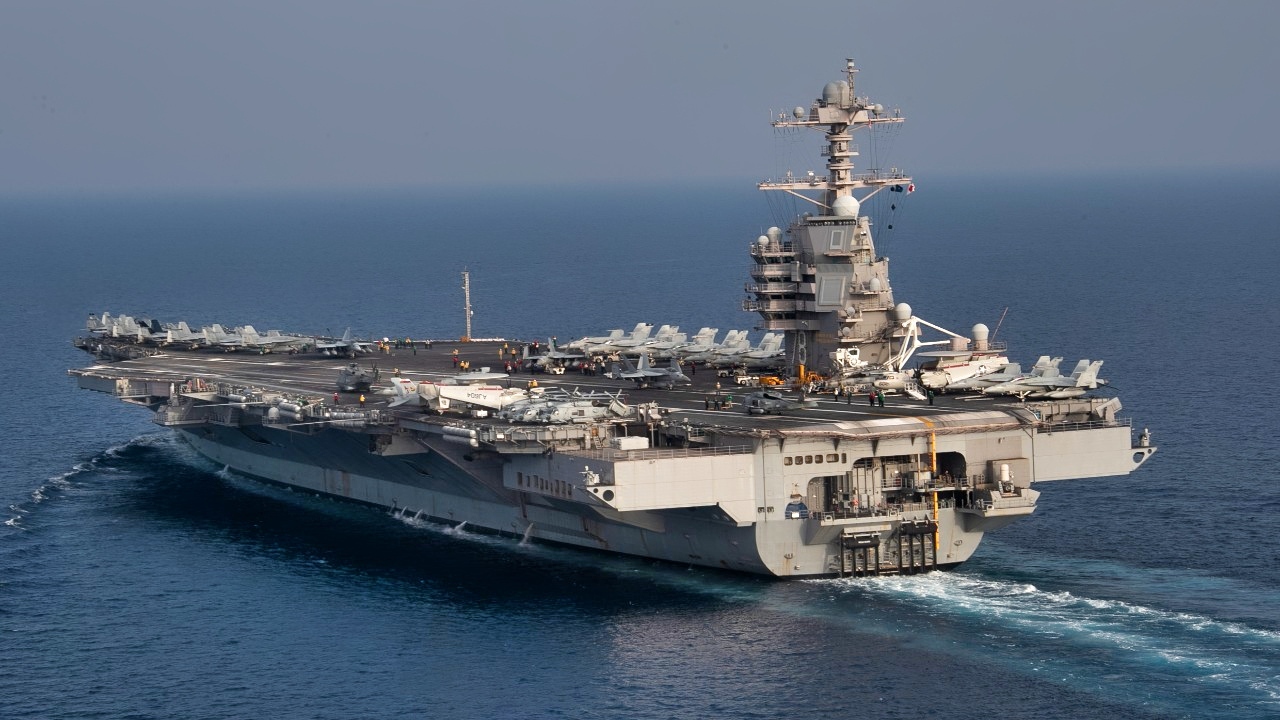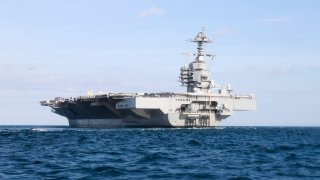Ford-Class: The U.S. Navy's Aircraft Carrier Might Have 1 Fatal Flaw
The Ford-class aircraft carrier, set to replace the aging Nimitz class, is hailed as the future of U.S. naval airpower. However, the USS Gerald R. Ford, the lead ship in this class, has faced numerous reliability issues, raising concerns about its durability under wartime conditions. That could be a truly fatal flaw.
Summary and Key Points: The Ford-class aircraft carrier, set to replace the aging Nimitz class, is hailed as the future of U.S. naval airpower. However, the USS Gerald R. Ford, the lead ship in this class, has faced numerous reliability issues, raising concerns about its durability under wartime conditions. That could be a truly fatal flaw.
-While American supercarriers are notoriously difficult to sink, the Ford's technical problems—ranging from catapults to radar systems—highlight potential vulnerabilities.
-With the prospect of high-stakes conflict with adversaries like China, the question remains whether the Ford-class carriers can endure direct combat, especially given the immense political and strategic risks involved.
USS Gerald R. Ford Faces Scrutiny Amid Reliability Concerns
The new Ford-class carrier is billed as the future of U.S. naval airpower. As it gradually replaces the 50-year-old Nimitz class, the Ford class will soon become the primary supercarrier of the U.S. Navy. But the first-in-class USS Gerald R. Ford has suffered from a slew of reliability problems. And as anti-ship defense systems improve, the question is being raised: How durable will the Ford class be under wartime conditions?
Ford-class Aircraft Carrier: Built for Battle?
It is difficult to picture a scenario in which the U.S. exposes its $13 billion supercarrier to enemy fire. Of course, the Ford class is built explicitly for combat. But the Navy hasn’t placed an aircraft carrier in an existential situation in decades – not since World War II, really, when lightweight aircraft carriers like the Essex class were made quickly and efficiently.
Today, American supercarriers are almost immeasurable vessels of resources. The Ford class is loaded with thousands of sailors, a hundred or so aircraft (each costing $60 million or so), the very latest technology, and a nuclear reactor.
The investment alone is a significant deterrent for American war planners. And there’s another thing causing hesitancy: American expectations. Americans don’t have a tolerance for wide-scale loss of American lives or property. That is a good thing. But that low tolerance threshold is often in conflict with the self-imposed global police mandate – a mandate for which the supercarrier is a vital instrument. Americans would be shell-shocked if one of their supercarriers, carrying a few thousand sailors, went down. The political blowback would be immense. The will to continue fighting might collapse.
America has waged war with half-measures for decades in places like Grenada, Panama, Somalia, and Kosovo. America was able to get by with minimal investment and zero disruption to the daily lives of everyday Americans. Similarly, the expectations for casualties in these conflicts fell to almost zero. Iraq and Afghanistan represented more significant investments in American warmaking, but not nearly enough to put an aircraft carrier on the line.
A war with an adversary like China could be very different. Such a conflict might require putting an aircraft carrier and her sailors in direct danger. Is America ready for such a commitment? Is the Ford class?
Measuring the Ford
American supercarriers are hard to kill. The Navy could not sink USS America with torpedoes and missiles and instead had to rig the ship with explosives at critical structural points. The Ford is likely no different – built to last and built to take a beating.

But the Ford has had some problems. Testing of USS Ford’s catapults, arresting gear, and jet blast deflectors resulted in delays. The radar system also had problems. And testing suggested the ship had significant EMI and radiation hazards.
Does any of this tell us whether the Ford can or cannot withstand enemy fire? No, but anytime one system doesn’t work as planned, it becomes natural to wonder whether another system might have the same problem.
About the Author: Harrison Kass
Harrison Kass is a defense and national security writer with over 1,000 total pieces on issues involving global affairs. An attorney, pilot, guitarist, and minor pro hockey player, Harrison joined the US Air Force as a Pilot Trainee but was medically discharged. Harrison holds a BA from Lake Forest College, a JD from the University of Oregon, and an MA from New York University. Harrison listens to Dokken.
Image Credit: Creative Commons.


